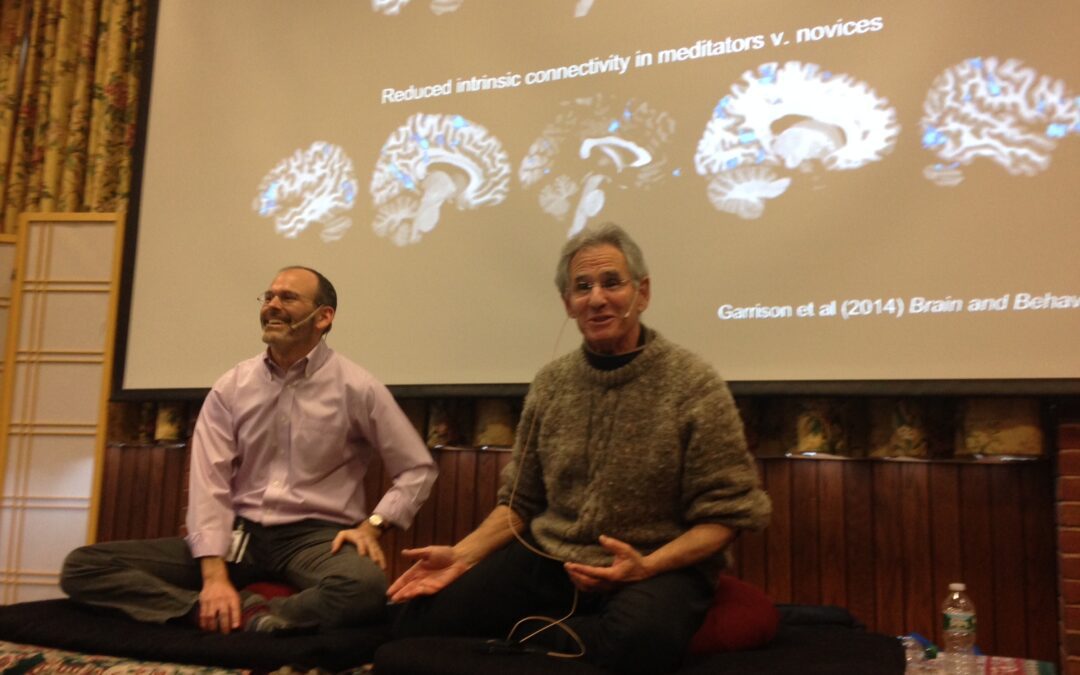I am proud to represent Mindful Medicine at the annual conference of the Center for Mindfulness at UMass Medical School! Though there is still a little snow on the ground here in Worcester, Massachusetts, inside it’s a warm and vibrant environment with many teachers, scientists, and mindfulness practitioners who have devoted much of their lives to this practice of mindfulness. So inspiring! This year, the conference’s theme will be on ethics.
Today, however, was a day of practice. A day-long retreat with Jon Kabat-Zinn, the originator of MBSR (Mindfulness-Based Stress Reduction), and Judson Brewer, MD, the resident researcher at the UMass Center for Mindfulness:
“This daylong retreat will be conducted using the laboratory of our own body-mind. Periods of guided practice that punctuate particular aspects of experience will be integrated with brief presentations and discussions of directly relevant research findings. In this way, our subjective, lived experience will be intimately linked to current scientific understandings of the underlying neurobiological processes.”
Between the two of them, they were able to put these centuries-old practices into context, creating a balanced and multi-dimensional view of some of the most recent brain science. One example: One of Dr Brewer’s projects has been getting experienced meditators and meditation novices into fMRI machines and measuring their Default Mode Network (DMN), which include the Posterior Cingulate Cortex (PCC) and the Medial Prefrontal Cortex (MPFC).
The Default Mode Network is activated by self-referential thoughts and activities: “What am I going to have for dinner? Why did she say that to me? What will they think of me?” These may be very familiar thoughts in our moments of disconnection and getting lost in thought or getting “caught up” in meditation! Jon referred to it as “The Story of Me.” We don’t need an fMRI to see that this is a habit that causes suffering: When we are insisting things be Our Way. When we are defending territory. When we are frightened about losing face or social status.
In studying these markers in the brain — the activity of the Default Mode Network — Dr Brewer was able to observe that in novices, these areas tend to be very active. Experienced meditators, however, were able to actually quiet these areas with meditation in real time, showing occasional spikes of DMN activity when the meditators were concerned how they were faring in the process of being tested.
DMN activity is characterized by a narrative process, and is relative to time — past and future. When the default mode network is less active, there is a more experiential process at work. Things just happening and in flow. This is one of the aspirations of MBSR: Non-striving. It’s paradoxical, but indeed, trying harder to achieve a certain state of mind leads us further away from what is actually happening in the moment.
Experienced meditators have learned to let go; not get so caught up in their conceptual self. Over time and with practice, this letting go, this effortlessness that can happen in meditation can also be applied to the activities of life. Mindfulness becomes a way of being.
And this is really what it’s all about. The science of meditation and mindfulness is not about trying to make pretty fMRI pictures, or “tune up” the insula, or try to get a thinner *amygdala. Trying to get somewhere else is not mindfulness. Science is a practice, and is never a finished story, just like we are. What we are really doing is being with things as they are, discovering who we really are; something much more vast than “The Story of Me”.

